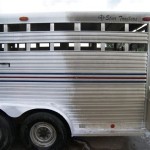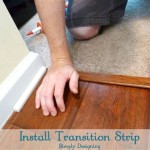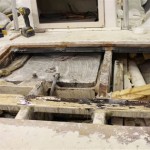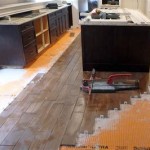How To Fix Laminate Flooring That Got Wet
Laminate flooring, prized for its affordability, durability, and aesthetic appeal, is a common flooring choice in many homes. However, its weakness lies in its vulnerability to water damage. Unlike solid hardwood, laminate flooring is constructed with a fiberboard core, which is highly absorbent. When exposed to moisture, this core can swell, warp, and buckle, leading to significant damage if not addressed promptly. Understanding the steps necessary to mitigate water damage in laminate flooring is crucial for preventing irreversible harm and potentially saving the floor.
The immediate response when discovering wet laminate flooring is paramount. Delaying action can allow the water to penetrate deeper, increasing the likelihood of long-term damage and fostering the growth of mold and mildew. This guide provides a detailed, step-by-step approach to diagnosing the extent of the water damage, removing excess water, drying the affected areas, and addressing potential repairs.
Immediate Action: Assessing and Containing the Damage
The first step in addressing wet laminate flooring is to identify the source of the water and immediately stop it. This could be a leaky pipe, a overflowing appliance, a spill, or even condensation from high humidity. Once the source is stopped, assess the extent of the water damage. Mark the affected areas and determine how far the water has spread. This assessment will help determine the scope of the needed repairs and the amount of effort required.
Begin by removing any standing water. This can be accomplished using towels, a wet/dry vacuum, or a mop. The goal is to remove as much surface water as possible to prevent further absorption into the flooring material. If the water damage is localized to a small area, focus on that area first. For larger areas, work systematically to ensure all standing water is removed efficiently.
Once the standing water is removed, begin wiping down the affected area with clean, dry towels. Apply gentle pressure to absorb any remaining moisture on the surface of the laminate. Using a squeegee can also be effective for forcing water out from between the laminate planks. Regularly wring out or replace the towels as they become saturated to maximize their absorbency.
Inspect the perimeter of the affected area, particularly along the baseboards and walls. Water can seep into these areas and cause damage to the drywall and other structural components. If any moisture is detected in these areas, wipe them down thoroughly with towels and ensure adequate ventilation to promote drying.
Document the damage with photographs and notes. This documentation is crucial for insurance claims and will provide a record of the initial damage for comparison during the drying process. Be sure to capture the extent of the affected area, any visible warping or buckling, and any signs of water damage to surrounding structures.
Thorough Drying: Prevention of Long-Term Issues
After removing surface water, the next crucial step is to thoroughly dry the affected area to prevent mold growth and further damage to the laminate flooring. This involves increasing ventilation, utilizing dehumidifiers, and potentially removing baseboards to access trapped moisture.
Increase ventilation by opening windows and doors to create airflow. Cross-ventilation is particularly effective, as it allows for a continuous flow of fresh air to circulate through the room, carrying away moisture. If outdoor humidity is high, use fans instead of opening windows to avoid introducing more moisture into the area. Place fans strategically to direct airflow across the wet laminate flooring.
Employ dehumidifiers to extract moisture from the air. Place dehumidifiers in the affected room and set them to the lowest humidity setting. Regularly empty the water collection tank on the dehumidifier and monitor the humidity level in the room. The goal is to reduce the humidity to below 50% to inhibit mold growth. For larger areas, consider using multiple dehumidifiers to expedite the drying process.
Consider removing the baseboards around the affected area. Baseboards often trap moisture against the walls and behind the laminate flooring. Carefully remove the baseboards using a pry bar and inspect the wall cavities for moisture. If moisture is present, use fans to dry the wall cavities and ensure proper ventilation before replacing the baseboards. Removing baseboards allows for a more thorough drying of the perimeter and prevents hidden mold growth.
Continue to monitor the moisture level in the laminate flooring and surrounding areas. Use a moisture meter to measure the moisture content of the laminate and the subfloor. The target is to achieve a moisture content that is consistent with the surrounding unaffected areas. This may require several days or even weeks of continuous drying, depending on the extent of the water damage.
Run fans and dehumidifiers continuously until the laminate flooring is completely dry. Regularly check for any signs of mold growth or further damage. If mold is detected, address it immediately with an appropriate mold remediation solution. Ensure that the area is thoroughly cleaned and disinfected before replacing any baseboards or furniture.
Repair and Restoration: Addressing Damage and Prevention
Once the laminate flooring is completely dry, assess the extent of any remaining damage. Minor warping or buckling may correct itself over time as the floor dries. However, significant damage may require replacing affected planks or even the entire floor. Prevention of future water damage is also crucial to consider during the restoration process.
Evaluate the damage to individual laminate planks. Check for warping, buckling, discoloration, or delamination. Minor warping may diminish as the floor fully dries. However, planks that are severely warped or delaminated will likely need to be replaced. If the damage is localized to a few planks, consider replacing only those planks to minimize the cost and effort of the repair.
If replacing individual planks, carefully remove the damaged planks using a utility knife and a pry bar. Score the edges of the damaged plank and gently pry it up. Be careful not to damage the surrounding planks or the subfloor. Clean the subfloor thoroughly before installing the new planks. Ensure that the new planks are the same color and style as the existing flooring for a seamless repair.
If the water damage is extensive, consider replacing the entire floor. This may be necessary if the damage has affected a large area or if the subfloor is also damaged. Before installing new flooring, ensure that the subfloor is level, clean, and dry. Repair any damage to the subfloor, such as cracks or uneven surfaces, before installing the new laminate flooring.
Consider installing a moisture barrier under the laminate flooring to prevent future water damage. A moisture barrier is a thin layer of plastic sheeting that is placed between the subfloor and the laminate flooring. This barrier prevents moisture from seeping up from the subfloor and damaging the laminate. Ensure that the moisture barrier is properly installed according to the manufacturer's instructions.
Take preventative measures to reduce the risk of future water damage. Ensure that all plumbing fixtures and appliances are properly maintained and inspected regularly. Repair any leaks promptly to prevent water from seeping into the flooring. Use rugs or mats in areas that are prone to spills, such as kitchens and bathrooms. Ensure adequate ventilation in areas that are prone to high humidity to prevent condensation.
Regularly inspect the laminate flooring for any signs of water damage. Check for discoloration, warping, or buckling. Address any issues promptly to prevent further damage. With proper care and maintenance, laminate flooring can provide years of beauty and durability. Being proactive and taking steps to prevent water damage will help extend the life of the floor and maintain its appearance.
Address potential mold growth with appropriate cleaning and disinfecting agents. Should mold occur clean with bleach based solutions. Proper PPE such as gloves and respirators should be worn to prevent any possible adverse effects.

A Guide To Fix Wet Laminate Floors All Dry Usa

How Can I Fix Oak Laminate Flooring That Has Swollen From Being Wet Hometalk

How Do I Camouflage Water Damaged Laminate Flooring Hometalk

A Guide To Fix Wet Laminate Floors All Dry Usa

A Guide To Fix Wet Laminate Floors All Dry Usa

Why Am I Being Told That My Waterproof Laminate Flooring Needs To Be Pulled Up After Water Damage Restopros Of Northeast Georgia

Repair Water Damaged Laminate Flooring

Tips To Fix Laminate Floor Bubbling

What Happens When Wood Floors Get Wet Escarosa

How To Repair Laminate Flooring With Water Damage Dry Force
Related Posts








